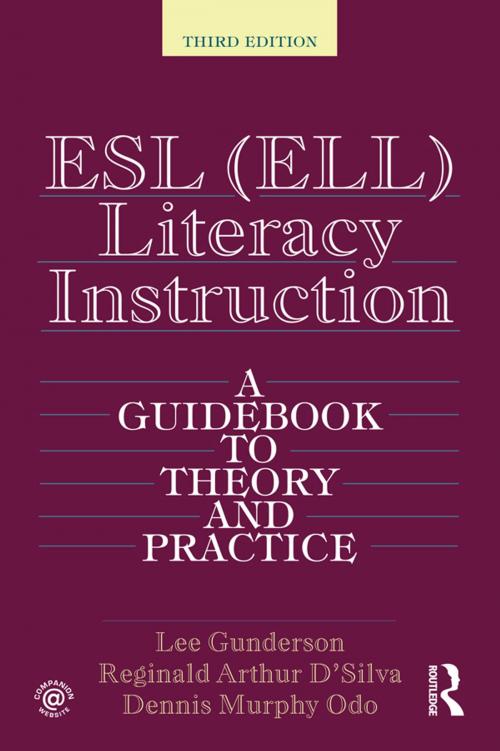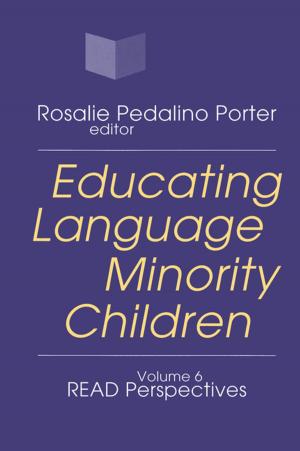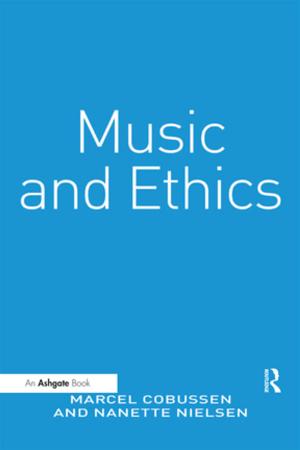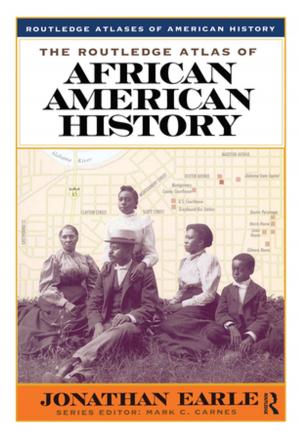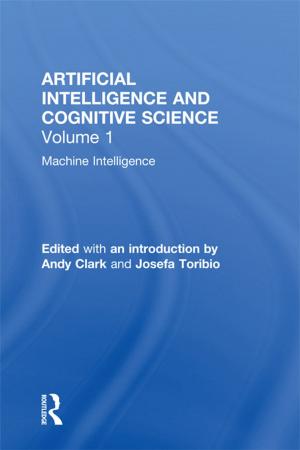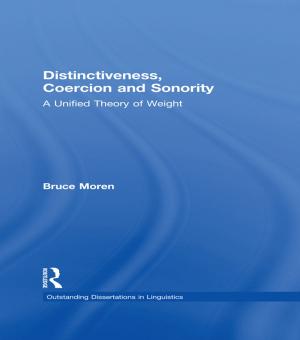ESL (ELL) Literacy Instruction
A Guidebook to Theory and Practice
Nonfiction, Reference & Language, Language Arts, Literacy, Study Aids, ESL, Foreign Languages| Author: | Lee Gunderson, Dennis Murphy Odo, Reginald Arthur D'Silva | ISBN: | 9781135052379 |
| Publisher: | Taylor and Francis | Publication: | July 31, 2013 |
| Imprint: | Routledge | Language: | English |
| Author: | Lee Gunderson, Dennis Murphy Odo, Reginald Arthur D'Silva |
| ISBN: | 9781135052379 |
| Publisher: | Taylor and Francis |
| Publication: | July 31, 2013 |
| Imprint: | Routledge |
| Language: | English |
ESL (ELL) Literacy Instruction provides both ESL and mainstream teachers with the background and expertise necessary to plan and implement reading programs that match the particular needs and abilities of their students. Comprehensive and research-based, it applies current ESL and reading research and theory to practice. Designed for use by pre-service and in-service teachers at all levels from kindergarten to adult learners, it explains different models of literacy instruction from systematic phonics to whole language instruction and includes specific teaching methods within each model. Multicultural issues are addressed.
Instructional matrices that account for the wide variations in ESL (ELL) student backgrounds and abilities form the pedagogical basis of the approach described in the text. The matrices, based on extensive research, involve two easily measured variables that predict what programs and approaches will be comprehensible for learners who vary in age, literacy background, English ability, and program needs. Readers are encouraged to develop their own teaching strategies within their own instructional models.
ESL (ELL) Literacy Instruction provides both ESL and mainstream teachers with the background and expertise necessary to plan and implement reading programs that match the particular needs and abilities of their students. Comprehensive and research-based, it applies current ESL and reading research and theory to practice. Designed for use by pre-service and in-service teachers at all levels from kindergarten to adult learners, it explains different models of literacy instruction from systematic phonics to whole language instruction and includes specific teaching methods within each model. Multicultural issues are addressed.
Instructional matrices that account for the wide variations in ESL (ELL) student backgrounds and abilities form the pedagogical basis of the approach described in the text. The matrices, based on extensive research, involve two easily measured variables that predict what programs and approaches will be comprehensible for learners who vary in age, literacy background, English ability, and program needs. Readers are encouraged to develop their own teaching strategies within their own instructional models.
